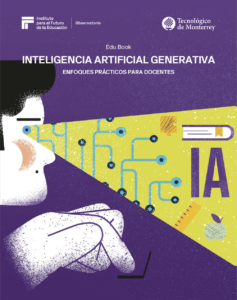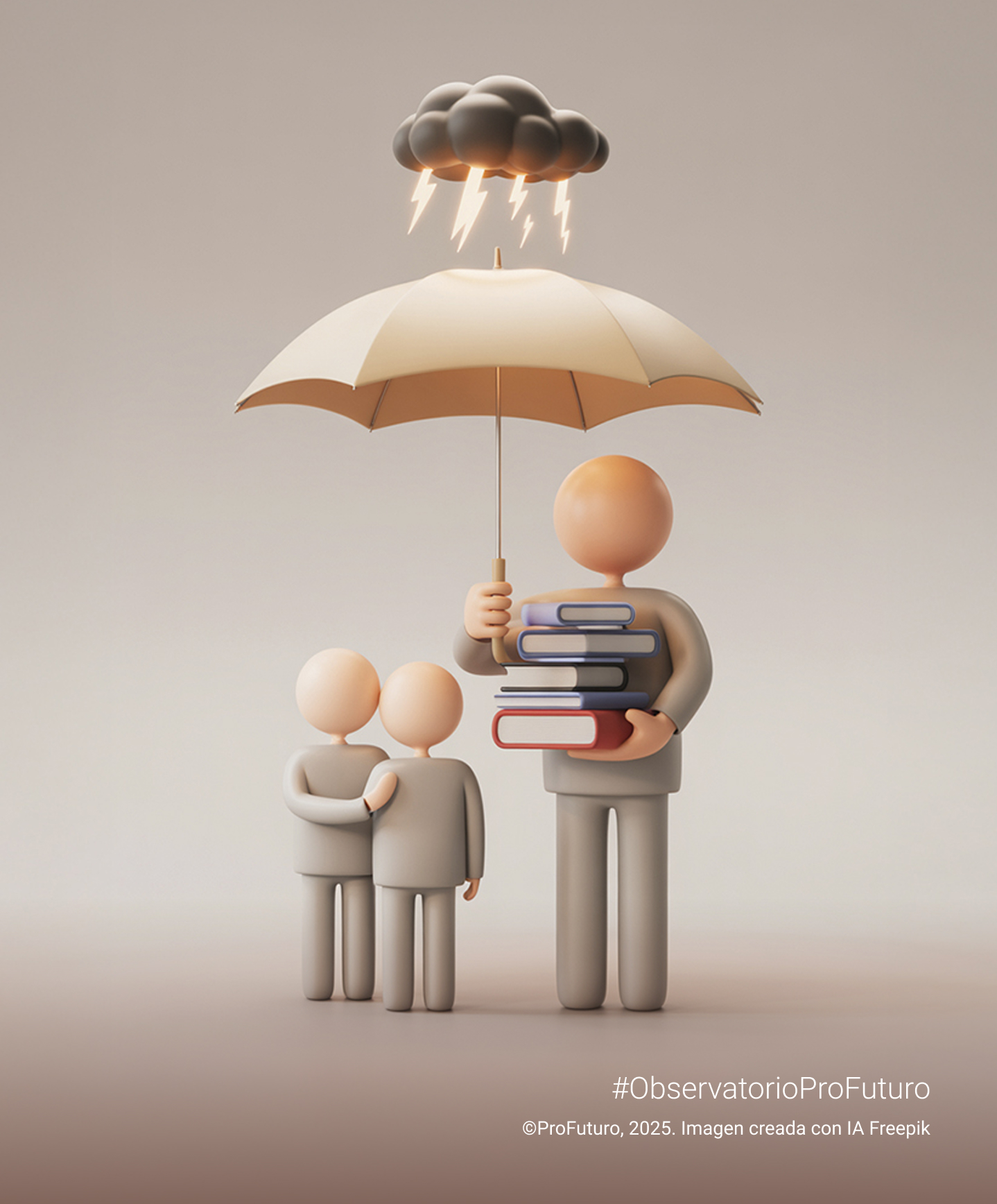Just a couple of school years ago, artificial intelligence was confined to innovation conferences or Sunday supplements. Today, ChatGPT drafts essays, Copilot completes emails, and dozens of AI-powered tools promise to save time, improve grading, and even teach for us. Some succeed. Others, not so much. In any case, AI has arrived in the classroom.
Institutional enthusiasm has been swift and predictable. Guides, webinars, and “must-use” tool lists have multiplied. The result is the usual: a mix of fascination, fatigue, and that ever-present 21st-century feeling of being one step behind. Of course, there are those who see AI as the beginning of the end of human thought, and others who embrace it as the cure for all educational woes. And then there are the teachers. The ones in the classroom every day. The ones rightly asking: What am I supposed to do with this?
This article aims to offer a grounded perspective on how to use generative AI with purpose and sound judgment. And for that, it helps to look at what others are already doing.
The Edu Book Generative Artificial Intelligence – Practical Approaches for Teachers, published by the Institute for the Future of Education at Tecnológico de Monterrey, does exactly that: it gathers proven tools and real experiences. Like any good toolbox, it’s only useful if you open it.

What Generative AI Means for Teaching
To put it simply: artificial intelligence is like statistics on steroids. In broad terms, it’s a system trained to produce content (text, images, code, even music) based on massive amounts of prior data. It doesn’t think, but it imitates quite well.
In teaching, generative AI has entered classrooms rapidly. Today, it can write essays, summarize texts, suggest evaluation rubrics, design differentiated activities, and even simulate conversations with historical or literary figures. It can adapt explanations to a student’s cognitive style or spot errors in a written piece—and do it all in seconds.
Of course, there’s fine print. AI doesn’t know what it says; it only knows how to say it. That means it may produce coherent but incorrect or shallow content. And if we’re not careful, it can also foster dependence: quick answers replacing deeper thinking.
But not everything is a red flag. Used wisely, AI can take over repetitive tasks, free up time for what truly matters (listening, guiding, assessing with judgment), and open new paths for personalized learning. It doesn’t replace the teacher—but it can relieve them of bureaucratic burdens that sap time and energy from real teaching.
As always, the issue isn’t the tool—it’s how we use it. And the judgment we apply in deciding when and why to use it.
The Teacher’s Toolbox: What AI Offers
One of the most common (and understandable) temptations with AI in education is to create catalogs. Hundreds of tools promise to transform the classroom, automate planning, or turn any teacher into an instructional designer in five clicks.
That’s why the approach in the publication from Tec de Monterrey is refreshing. Instead of presenting an endless arsenal, it offers a thoughtful selection, commented on by teachers who have used—and sometimes struggled with—these tools in their own classrooms.
Let’s look briefly at some examples from the book:
- Eduaide.ai acts like an energetic planning assistant: it designs rubrics, learning objectives, Jeopardy-style games, and activities for different student levels. It works well if you know what you want—not so much if you expect it to think for you.
- Twee is geared toward ESL teachers. It generates dialogues, vocabulary lists, listening, and reading comprehension exercises.
- To Teach lets you create worksheets, word searches, glossaries, or mind maps from any text. It’s simple but practical, especially when you need something functional fast.
- Khanmigo, from Khan Academy, adapts explanations and proposes individualized strategies.
All these tools share a common trait: they save time. And sometimes, that’s enough to teach with less fatigue and more focus. The challenge is integrating them without giving up pedagogical judgment. Let AI work, yes—but in service of a class that still has names, faces, and context.
That’s why the approach in the publication from Tec de Monterrey is refreshing. Instead of presenting an endless arsenal, it offers a thoughtful selection, commented on by teachers who have used—and sometimes struggled with—these tools in their own classrooms.
Real Experiences: 5 Ways to Use AI with Teaching Judgment
Much of what we “know” about AI in education is based on assumptions, headlines, or promises. That’s why it’s valuable to find documents like this one, featuring real cases from real classrooms. Let’s look at how some Latin American teachers are already using AI, as described in the Tec de Monterrey publication.
- Using AI to Spark Thought (Not Replace It). A humanities teacher had students generate questions about a novel using AI, then evaluate them. Were they relevant? What was missing? What biases emerged? This sparked a debate on quality, intention, and critical reading. The same teacher used AI for autobiographical stories, emotions, and digital ethics—always as a way to provoke deeper thinking.
- ChatGPT as a Pre-Research Warm-Up. In a science class, students used ChatGPT to brainstorm before starting research. They couldn’t cite it, but they could analyze, contrast, and reformulate its outputs. The exercise worked as a mental rough draft—not definitive, but useful.
- Teaching Math to the AI. An elementary teacher reversed the roles: treating AI as a student, giving it math problems, letting it make mistakes, and correcting them. Students learned by spotting and explaining the AI’s errors. Teaching, in this case, became a path to deeper learning.
- Planning with AI to Gain Time (and Think Better). A teacher with experience in educational innovation used various generation tools for rubrics, differentiated activities, and games. The result wasn’t spectacular—but it was efficient. She had more time for students and less time spent designing from scratch.
- AI as a Creative Mirror. In a writing-focused class, students used AI to generate texts, analyze styles, and spot bias. Who writes better—the human or the machine? What does that mean? The goal wasn’t to assess or correct but to provoke discomfort—and from that, creative ideas emerged.
Five different cases, five ways to integrate AI without losing pedagogical judgment. In none of them did AI replace the teacher. In all of them, it served as a support.
Beyond the Tool: Pedagogical and Ethical Challenges
A subtle danger of technology that “works too well” is that it becomes invisible. We stop questioning whether it should be doing what it does. AI in education can draft flawless texts, generate tests in seconds, adapt explanations—but amidst fatigue and urgency, we may forget that teaching is much more than delivering content.
The first challenge is pedagogical. AI may simplify instructional design—but it can also dilute it if used to mass-produce out-of-context activities. A good resource doesn’t always make a good class. A teacher’s judgment is still key in knowing what to keep and what to discard.
The second is ethical. Should students declare if they used AI in their assignments? Should teachers grade differently if ChatGPT helped write a paper? How do you cite a source that writes like a human but technically doesn’t exist? And beyond that—what’s the environmental cost? Who controls the tech? What biases does it perpetuate?
This isn’t about being paranoid or technophobic. It’s about asking the right question—not “Can I use this?” but “Why am I using this?” AI can be a shortcut—or a starting point. It can reinforce passivity—or awaken curiosity. It can level the field—or deepen inequalities.
Teaching, Even with AI
Generative AI won’t fix education. Nor will it destroy it. What it will do (and already is doing) is push us to rethink how we teach, what we assess, and what we value as learning. It’s not a threat or a miracle—it’s a mirror. It forces us to decide what we want to keep, what we can change, and what we’re willing to delegate.
With support from Tec de Monterrey, this article offered a critical and concrete approach to using AI in the classroom: time-saving tools that don’t empty out teaching, inspiring experiences, and tough questions with no single answer—but worth asking. And at the core of it all: pedagogical judgment matters more than the algorithm.
As always, some teachers will use AI to speed things up. Others, to enrich them. What matters is that it’s not used mindlessly—without context, purpose, or care. Because even in the age of prompts and digital assistants, teaching is still, above all, a deeply human act.






